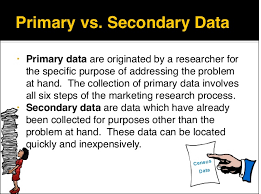Marketing Primary Research Process Primary research can take the form of ethnographic/netnographic research (participant observation), interviews, questionnaires, etc.

The key areas to investigate include a SWOT analysis (from their weaknesses you can figure out in what area they need more help), what use of technology are they making at the moment? What else could be done? What is their segmentation, targeting and positioning (STP) strategy? What customers buy from them and why? Is there any gap in the market? What is their unique selling preposition (USP)? What is their branding strategy, what else could be done?, How is your chosen company using the marketing mix? How can they improve on their traditional and contemporary marketing(old and new marketing DNA)?
Areas to focus on:
Introduction to Marketing Primary Research Process
The clarity of the background information or the context of the report and your statement of the problem. A SWOT analysis can be included here, maybe inside a table and more details can be given in an appendix.
Concepts:
How well you have used theories, academic knowledge and statements of current good practice which are relevant to technology, digital marketing, segmentation, targeting and positioning (STP), marketing strategy and the extended marketing mix and how well you have referenced these.
Application:
The quality and completeness of your analysis with regard to the organisational situation, data and facts gathered with respect to the investigation (both secondary and primary research). Primary research can include ethnographic/ netnographic research (participant observation), as well as interviews or/and questionnaire surveys, etc.
Evaluation/analysis:
The degree of critical evaluation of the evidence about the issue in the light of the concepts developed.
Marketing Primary Research Process Conclusions
The plausibility of your opinions in the light of the organisational context and the implications for management in your conclusions.
Recommendations:
The feasibility of the recommendations in terms of cost, practicability and acceptability to the organization and the likely implementation time span.
Overall presentation of your report:
The quality of the structure, organization of material, flow of language, information and argument and the visual impact of the data gathered.
Get the right balance between marketing theories from books and journals and practical application.
Avoid the temptation to be very strong on application and weak on including and referencing theory and vice-versa.
At this high level it becomes increasingly important that you use an evaluative writing style and that you are critical of current practice as well as academic theory if relevant.
Part A: Assessing a Job or Position (30 marks)
First Read: Assignment 2 Reading
Using your own position or a position familiar to you, work through the Job Analysis Questionnaire, on pages 68–69 of your textbook and 84–85 of the Assignment 2 Reading before answering the following questions:
Define the purpose of the job (5 marks)
Define the major activities or responsibilities of the position. (10 marks)
Define the knowledge and other skills required to do the position. (10 marks)
Define the working conditions related to the position. (5 marks)
Part B: Developing a Job Description (30 marks)
Using Figure 3.5 Sample Job Description and Figure 3.6 Job Specification from Chapter 3 of the textbook and Figure 3.9 Sample Job Description and Figure 3.-10 Job Specification from the Assignment 2 Reading as a guide, develop a job description for your own position, or one with which you are familiar. Note the job specifications, or qualifications as they are commonly called, make up part of the job description. Using the job analysis gathered in Part A, include a job summary and listing of skills and abilities required, as well as the specifications or technical requirements needed to do the work.
Assess the competencies or qualities that are required. This may include any soft skills that are required to do the job.
Marketing Primary Research Process and the Labour Market Assessment
Write a two-page report (approximately 500 words) conducting a labour market assessment for the position you described in Part B. This includes:
Assessing the demand for labor (including a review of the economic conditions, legal issues, social concerns, technological issues or demographic trends)
Assessing the supply for labor (including the availability of others to do the work, replacement strategies, workforce factors)
Based on your assessment, if the organization were going to replace you, how would you recommend the work be adjusted or modified given the labour market conditions and possible efficiency gain available?




